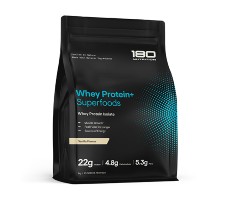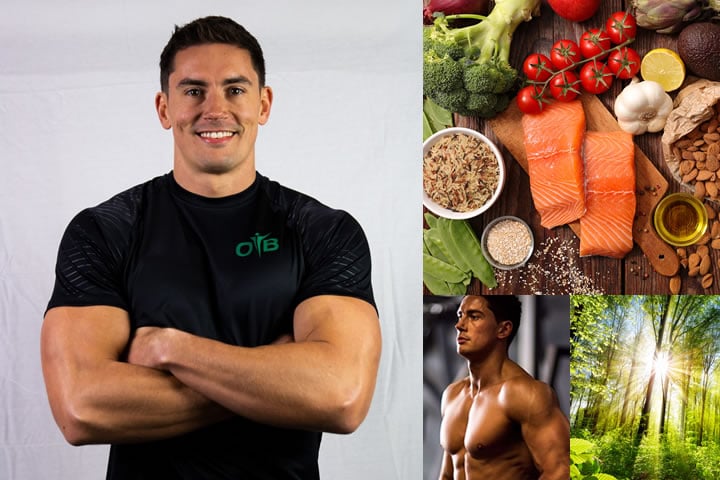Stu: I’m excited to welcome Martin Silva onboard as an ambassador for 180 Nutrition. But before we get into his article I would invite you to jump into Google, and just type in ‘Martin Silva fitness‘ and hit the Google image button…
Surprised? I was, and I look at this level of body composition as an absolute science. So for anybody out there that’s saying, “Well, hold on a minute, I’m a 45-year-old mum of three and I just want to lose a few pounds, how does this relate to me?’… I would say, why don’t you listen to the experts? Why don’t you listen to the people who really can walk the talk, who understand the finite science behind increasing lean muscle while reducing body fat, but doing it ‘naturally’ from a clear perspective of longterm health as a driving goal. Anyway, enough from me, over to Martin…
Martin: Having reached the professional level as a natural physique competitor and ranking within the top 10 in the world, I know exactly what it takes to build your best body without cutting any corners. I have coached hundreds of people over the past 15 years as a Personal Trainer, as well as coached many people virtually as a Level 4 Nutrition Coach.
Once you focus on creating healthy habits, these new behaviours become a part of your healthy lifestyle.
1) Follow a well structured strength training program
If you are looking to change the way your body looks in terms of building muscle and losing fat, following a proper training program is essential. When your goal is to build an aesthetically pleasing physique, you will get much better success long-term if you focus on increasing strength and building muscle. Rather than just going to the gym and doing a leg session or an upper body session, focus on hitting your body parts more frequently by hitting the full body 2-3 times per week. When you train the full body though, make sure you include the lifts which will maximise your results such as barbell squats or lunges, deadlifts, overhead press, bench press and pull ups. In other words, use free weights when training the full body because this will get you much better bang for your buck when done appropriately.
If you are someone who likes to lift weights 5-6 times per week, then focus on your lagging body parts on the extra sessions by doing a 30-40 minute session, using mainly machines. Focus on connecting to your muscles rather than hammering them! You want your full body sessions to be moderate/high intensity, and your “target” sessions to be low/moderate intensity. It is important to note that your body will adapt to a specific rep range after around 3-6 weeks, so if you are currently doing 8-12 reps on most exercises, then switch over to the 3-8 rep range, go heavier and take more rest in between sets, or switch over to 12-25 rep range with less rest in between sets. Just be sure to switch up the rep range after 3-6 weeks because your body adapts too much which will lead to diminishing results.
2) Increase your daily movement
In terms of losing fat and keeping it off, I always get much better results with my clients when they focus on increasing their daily movement. Awareness is key, so the first step is to get yourself a wrist piece such as a fit bit, they are pretty inexpensive. The next stage is to track how many steps you are doing each day and then slowly start walking more. If you are someone who moves less than 10,000 steps per day, then start by adding 2000 steps per day. Give or take, this works out to be an extra 20 minutes of walking each day which will burn over 1000 extra calories over the space of a week. Either get up 30 minutes earlier and go for a nice morning walk that will make you feel better mentally anyway. Take a walk after your lunch, or go for a walk in the evening after your dinner.
Walking for 10-20 minutes after eating also works wonders for digestion and energy levels. Another small win is by parking your car a little further away from work or getting off the bus a stop earlier, taking the stairs at work instead of the lift, or even cleaning the house more often! The compound effect of you consistently increasing your daily movement will not only help get leaner and stay lean, but it will also improve your overall health and longevity.
3) Add more whole foods to your diet
Adding more whole foods to your diet makes the process of getting in shape less stressful. Eating whole foods will also provide you with more energy, aid digestion, and improve overall health and performance. Processed foods are designed to be highly palatable, therefore it is easier to over consume calories which makes reducing body fat a lot more difficult. Now should we restrict foods/food groups altogether? Of course not, unless they cause us serious issues. Restricting usually leads to a binge, an overriding sense of guilt and over exercising, which is detrimental when it comes to your relationship with food and exercise. Moderation is key. Check out this recent STUDY done on whole foods vs processed foods.
4) Train smarter, not harder
Most people do way more than they need to when it comes to exercise. As much as I am an advocate for people doing any form of exercise that they enjoy, if you are looking to build your best body then I would recommend avoiding high intensity fitness classes. The problem with group exercise that is based purely on intensity is that you are just manually burning calories. The same goes for cardio training such as running or HIIT classes, i.e. you are manually burning calories so therefore your body becomes efficient at calorie expenditure which causes your resting metabolic rate (RMR) to slow down. This makes total sense from an evolutionary standpoint, your body adapts by slowing down your metabolic rate to keep you alive. Don’t get me wrong, for overall health cardiovascular training can be beneficial when used as a tool for a 3-4 week period, but if you do cardio for any longer than this then your metabolism will actually slow down. On the contrary, if you focus on lifting heavy weights and building muscle, this will cause your RMR to speed up because your body has to automatically burn more calories just to keep that muscle tissue on your body. 1 pound of lean muscle tissue will burn anywhere between 13-30 calories extra.
Lifting weights properly will elevate your heart rate for a sustained period anyway, much like cardio. Recent studies have concluded with strength training being more beneficial for your heart than cardio. I would like to clarify, I am not anti-cardio. Use cardio as a tool if you want to ramp up fat loss for a short period. HIIT cardio done properly is the most effective type of cardio for fat loss because it has a similar effect on the body as lifting weights. An example of proper HIIT training is 30 seconds of sprinting on a treadmill or wattbike like your life depends on it, resting for as long as you need to fully recover, and repeating this 5 times. HIIT should be 90-95% of your maximum speed to get the maximum results in terms of fat loss and increased fitness.
5) Make your health top priority
I used to be driven mainly by how I looked aesthetically. The funny thing is, when I started paying more attention to my health and less attention to how my physique looked, my body started looking better and better. I have found that the most effective approach as a fitness and nutrition coach, is to get my clients to switch their mindset and focus on the health markers such as their strength in the gym, relationship with food, sleep quality, gut health, mood, productivity, skin health etc. Eventually people start connecting the dots and learning more and more about their body, but more importantly when you switch your focus and tune more into the health indicators that I have mentioned above, your body starts to improve as a bi-product of you taking care of yourself.
6) Track your food intake
Keeping a food diary is the best way to help you become more aware of the amount of calories that you are consuming and also how certain foods make you feel. I always get the best results with my clients who are willing to take 10 minutes out of their day to input the foods that they have eaten into either my app that I use with online clients or myfitnesspal app. The app calculates all of the calories and macros for you, and then I am able to see what macronutrients that you need to adjust, i.e increasing protein intake for fat loss because protein is the most satiating macronutrient, increasing fibre intake because most people don’t consume enough vegetables etc.
Tracking food intake is mandatory for all online clients that I take on board because it is impossible for me to help someone lose fat or build muscle when I cannot see what calories and macronutrients that they are consuming. On the flip side, tracking your food intake should not be something that you do forever, but in my view, tracking is an essential starting point. In fact I have had some incredible results with some clients by just getting them to track, without me making any changes! It is surprising how many calories we consume mindlessly when we are snacking. People are always blown away when they realise how many extra calories that they were consuming without being aware of it.
If you are looking to get into the shape of your life this year then you should try full body training plan:
- Full Body Training
- Online Coaching
Find out more about Martin Silva below:
- 180 Nutrition Podcast: How Eating More Could Give You The Body You Desire
- 180 Nutrition Podcast: Building Lean Muscle The Healthy Way
- https://www.instagram.com/martinsilvafitness/
- https://www.facebook.com/Martinsilvafitness/
- https://www.optimiseyourbody.com
- Optimise Your Body With Martin Silva Podcast







